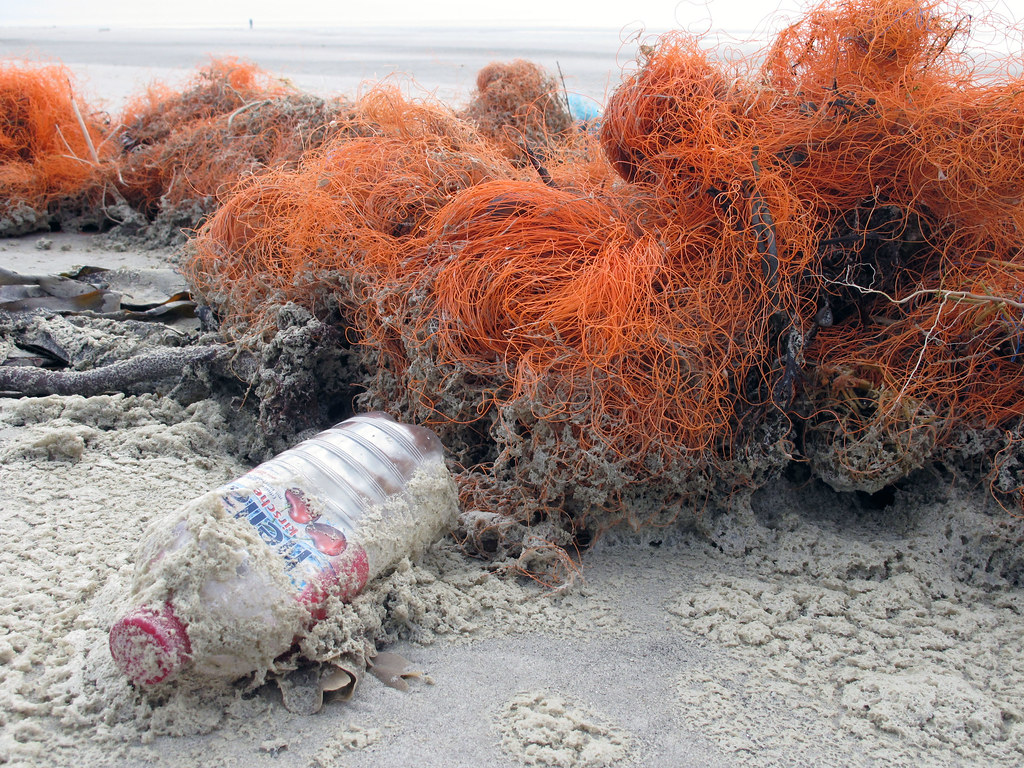
Experts are warning that the presence of plastics in fish around Greece is a growing problem, which not only poses a threat to marine life but also has potential implications for human health.
From discarded plastic bags and bottles to microplastics released from various sources, such as synthetic clothing, these plastic fragments find their way into water bodies and subsequently into the digestive system of fish. The growth of plastic production and consumption has only exacerbated this problem, rendering it a pressing environmental crisis.
A recent scientific publication by the Archipelagos Institute for Marine Conservation highlighted the abundance of microplastics and plastics in stranded marine life in the Aegean.
Twenty-five marine animals were examined: eight dolphins, two Mediterranean monk seals and fifteen sea turtles. Microplastic pollutants were detected in all of them. In particular, among other types of plastic, a total of 10,639 microplastic fibers were detected in the gastrointestinal tract of the dead marine mammals and turtles.
The results of this research confirm once again that the fragments and fibers of plastic waste exposed to the environment have already penetrated all levels of the ecosystems and food chain of the Greek seas.
Similarly, the conclusions of the fourteen previous scientific publications of the Archipelagos Institute on microplastic pollution from 2009 to date were also alarming. Plastic fragments and fibers are being detected in almost all of the many thousands of samples from various species of fish and invertebrates, marine flora, seawater, and sediment.
“After 20 years of research I see a rapid worsening of the situation regarding the presence of plastics in fish,” Thodoris Tsimpidis, director of the Archipelagos Institute, said. “The situation was not as bad as recently as five years ago,” he told Vice Greece.
He added that the concentration of plastics is widespread in the Greek seas and is not just observed around big cities like Athens and Thessaloniki. “Plastics pollution [has] been spread from Gavdos island in the south to Alexandroupolis in the north.”
“We find plastics from Italy, Egypt, Libya, Turkey, and other nations in the Mediterranean,” he revealed.
Dr. Guido Pietroluongo, a marine mammal veterinarian and an associate of Archipelagos Institute, said that microplastics created by the decomposition of plastics have been found in fish off the Greek island of Samos. This island is regarded as having among the clearest waters in Greece.
“We found large amounts of microplastics in mammals and fish,” the Italian expert said.
“Because we consume fish, microplastics enter the human body.”
As humans consume fish, the transfer of plastic particles and associated toxins from fish to humans has become a significant concern. Although the long-term effects of ingesting plastic-contaminated fish are not yet fully understood, they underscore the urgent need to address this problem and minimize exposure to plastic pollution.
210 species of fish found to eat plastic
The findings of the Archipelagos Institute for Marine Conservation in Greece confirm a worrying trend throughout the world’s oceans.
The United Nations says that more than four hundred million tons of plastic is produced every year worldwide, half of which is designed to be used only once. Of that, less than ten per cent is recycled.
An estimated nineteen to twenty-three million tons end up in lakes, rivers, and seas annually. That is approximately the weight of 2,200 Eiffel Towers altogether.
A recent study by Stanford scientists concluded that the consumption of plastic by marine animals is an increasingly pervasive problem, with litter turning up in the bellies of wildlife as varied as mammals, birds, turtles, and fish.
However, the problem is not impacting species uniformly, with some more susceptible to eating a plastic dinner than others.
With billions of people around the world relying on seafood for sustenance and financial security, the research warned that there is a growing number of species, including over two hundred species of commercial importance, eating plastic.
Over the last decade, the rate of plastic consumption has doubled, increasing by 2.4 percent every year, Stanford scientists found. Part of this is due to scientists’ increasing ability to detect smaller particles of plastic. However, even when the researchers statistically controlled for improvements in methodology, they still found an overall increase in plastic consumption.
Even more disconcerting is that many more new species of fish were discovered with plastic inside of them each year. The 210 species of fish that are caught commercially have been found to consume plastic, and this number is likely an underestimate, the researchers said.
See all the latest news from Greece and the world at Greekreporter.com. Contact our newsroom to report an update or send your story, photos and videos. Follow GR on Google News and subscribe here to our daily email!



